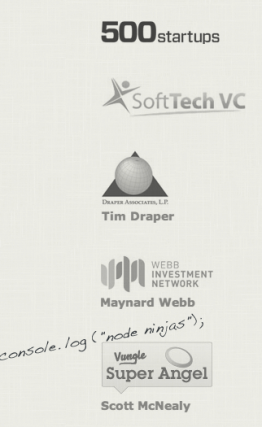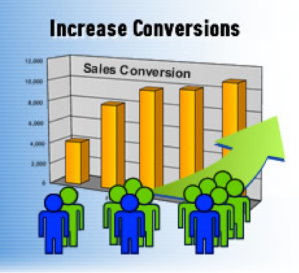What is Tapjoy?

Tapjoy is a mobile application that focuses on boosting free apps revenue streams and application user base. To date, Tapjoy boasts a userbase of over 77 million active users and over 700,000 daily micro transactions (Tapjoy.com, 2013). It has a global monthly reach of over 339 million users. In addition, Tapjoy is not restricted to just one mobile platform, they serve iOS (Apple), Android (Google), and WMP (Windows) making it easier for developers to generate user base when they only have apps developed for one of all three platforms (Tapjoy.com, 2013).
How does Tapjoy work?
Tapjoy has four main components that help developers build their revenue stream which I wrote in brief detail below:
Ad Marketplace
The Ad Marketplace presents a list of targeted marketing actions that users can complete in exchange for virtual rewards or premium content within your app (Tapjoy.com, 2013). These adds can consist of competing quick surveys or signing up for special offers on websites. The Tapjoy team has one main vision with the ad marketplace: “Let your users earn virtual rewards or premium content that enables them to engage deeper within your app without being forced to pay” (Tapjoy, 2013).
Featured Ad Unit
The Tapjoy Featured Ad Unit is a full-screen interstitial advertisement that highlights a single offer from a featured advertiser (Tapjoy.com, 2013). The idea of the featured ad unit is to increase the amount of conversions app developers get by hosting free apps. It is a practicable way of generating revenue during load times and times where a user is waiting.
Banner Ads
Tapjoy’s banner ads are the best performing banner ads on mobile, period (Tapjoy, 2013). Even though it may be the best performing it is by far the most annoying and invasive. There is nothing worse than trying to watch a video or play a game when 20% of your screen is being covered by an advertisement you have to close.
Tapjoy Videos
Tapjoy Videos offers hundreds of clips your users can watch from big brand advertisers and popular media companies (Tapjoy, 2013). The one thing about Tapjoy videos compared to the competition is the fact that they are available on every mobile platform and that makes it more lucrative for advertisers as well.
What does the tech industry think of Tapjoy?
Tapjoy is not very well received by most web/technology bloggers and I have to agree with them. While I believe as a business they are well structured and have a variety of revenue streams, the companies that Tapjoy partners with are questionable to say the least. Michael Arrington from TechCrunch had this to say about Tapjoy “I can’t wait to see what Tapjoy does next in this ever-escalating arms race. One thing’s for sure – it’ll be very profitable. And very shady,” (Arrington, 2012). Ryan Tate from Wired went as far as saying “Tapjoy, which was stung by Apple’s prior ban, has apparently just relocated the virtual bribes it was offering users to install apps” (Tate, 2012). I felt the exact same as Tate regarding the form of bribery, a user downloads an app for free and faces significant disadvantages in terms of progressing within the game unless they sign up for some of Tapjoy’s questionable offers.
One of the reasons why Tapjoy is able to expand and grow like a virus can also be credited to Apple by allowing their apps to be released on the App Store by taking advantage of loopholes. “Apple approves hundreds of apps that integrate and leverage Tapjoy” (Tate, 2012). Even if Apple bans “incentive-based” installation of apps they must take into consideration that these companies that continue getting approved via workarounds. Below is an example of how Tapjoy once again avoids Apple’s policies and continues generating revenue:
“Instead of getting developers to integrate its SDK into their games – the act Apple banned – Tapjoy’s just launched a web app that iOS consumers sign up for once on device, and which gives them an offer wall of apps and games they can download if they want to earn virtual currency, just as before” (Jordan, ND).
Final thoughts on Tapjoy
My personal experience with Tapjoy has not been very positive, if the company wants to be successful they need to start reading what bloggers and users have to say. One example of my interaction with Tapjoy would have to be playing a paid iPhone game and being offered an added bonus if I signed up for an adult dating site. Why on earth would this be a good idea? The game is rated for all audiences, so what would have happened if a younger child were presented with the same offer? Huge conflict of interest and overall a bad impression with me, I wonder how many other users feel the same. Step it up and clean up your business if you want to succeed Tapjoy, because right now you’re a business that I do not recommend working with.
That’s all for now folks. Let me know what you think about Tapjoy in the comments below.
Cheers,
Prabh
References:
http://developers.tapjoy.com/boost-your-revenue/#
http://techcrunch.com/2012/11/11/apple-stomps-on-tapjoys-app-download-circle-jerk-again/
http://www.wired.com/business/2012/11/app-bribe-fight/
http://www.pocketgamer.biz/r/PG.Biz/Tapjoy+news/news.asp?c=34747
























